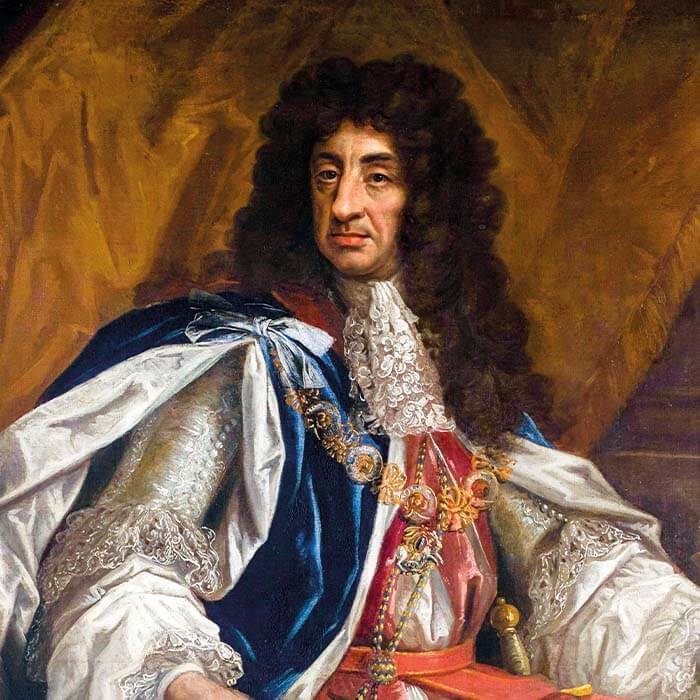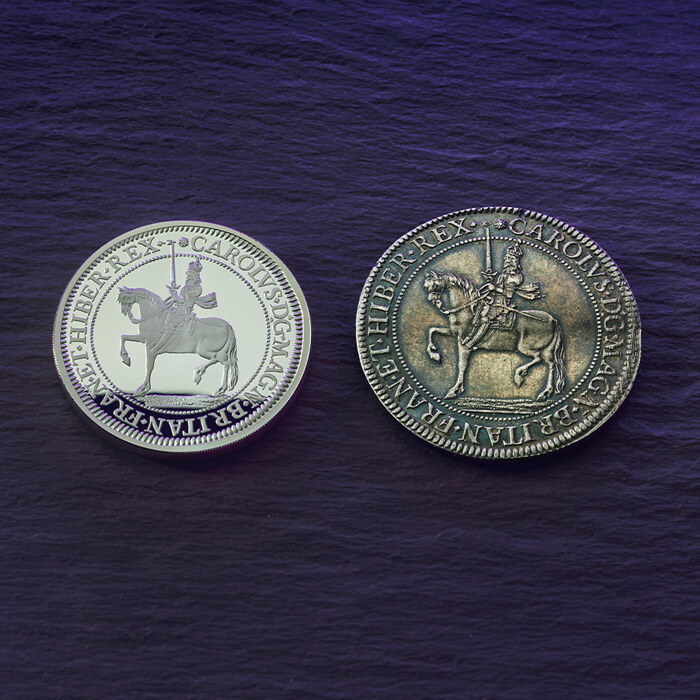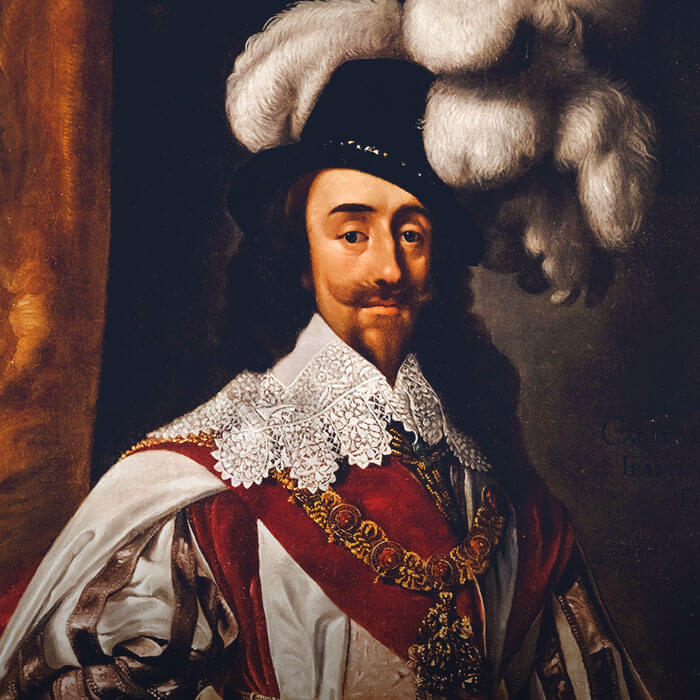The British Monarchs Collection reimagines the coinage portraits of several legendary British monarchs from the fifteenth century through to the modern day. The seventh coin in our British Monarchs Collection features the coinage portrait of Charles II, originally designed by John Roettier.
Drawing on more than 1,100 years of experience, we have used modern techniques to remaster this original design to show how the coinage would have first appeared in the reign of Charles II.
The newly crowned Charles II invited John Roettier to come to England from Flanders, alongside his brothers Joseph and Phillip, and they were asked to submit designs and trial pieces for the king’s coinage. The Chief Engraver of The Royal Mint, Thomas Simon, also received an invitation to submit his own designs and trial pieces for approval by the King. However, Simon missed the deadline for submission, owing in part to the pressure of work at the mint in preparing tooling for new machinery.
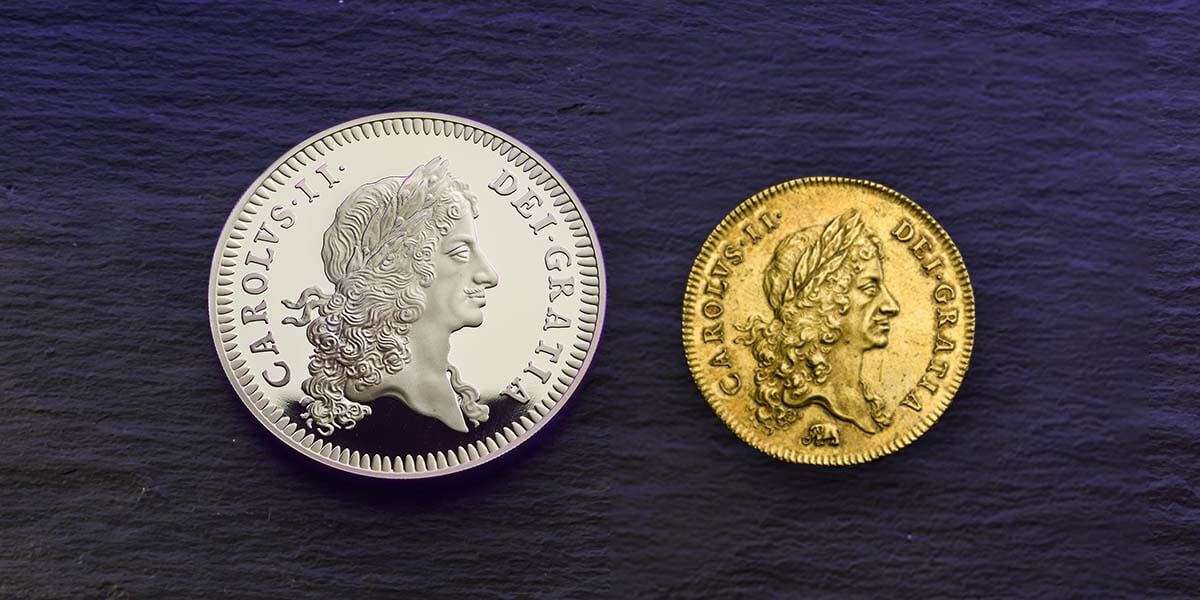
The Roettiers gained an advantage over Simon, and the King chose their designs for striking on his new coinage. Following this success, John Roettier eventually became the main engraver at the mint during the reign of Charles II. Alongside designing the new coinage for Charles II, it was also Roettier’s responsibility to make medals and Great Seals.
One of his most famous medals was the Peace of Breda, which depicted Britannia holding a spear and an olive branch. With the British flag emblazoned on her shield, the icon gazes out towards a British Royal Navy ship. Roettier’s design was so popular that, following some alterations for the smaller canvas, it appeared on the first official copper coinage that entered circulation in 1672.
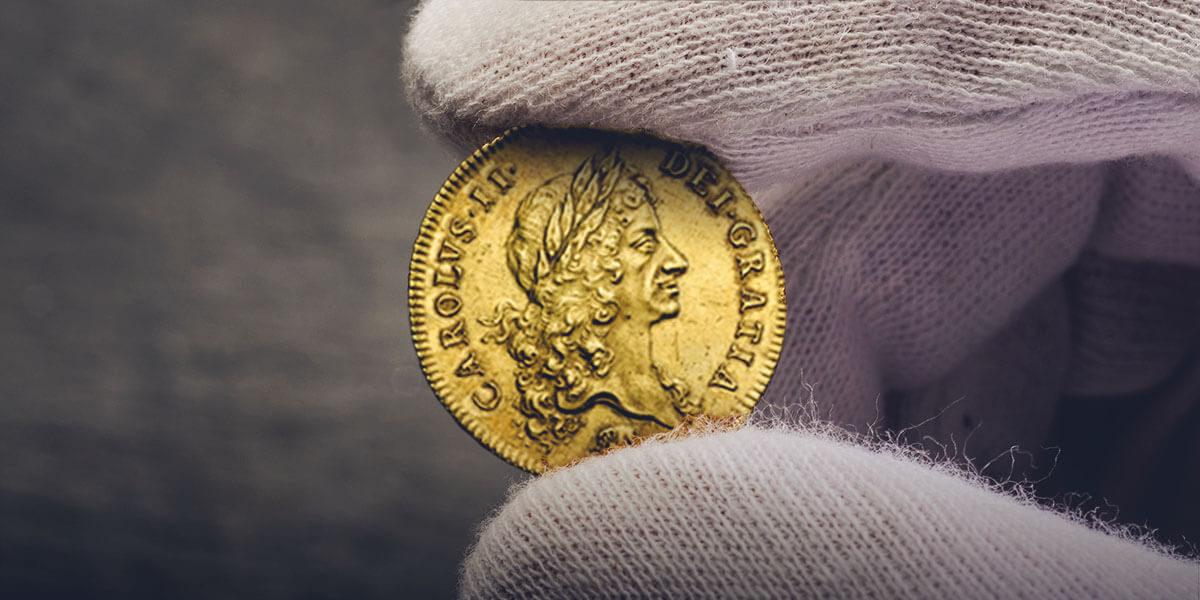
Already bitter at being sidelined, Thomas also became confined to a smaller role of engraving dies for Maundy money. Displaying his skill, he created the beautifully detailed Petition Crown, featuring a double-lined edge inscription directly petitioning the king to reinstate him as engraver, as well as a bust of Charles II. Ultimately, the Roettiers remained as the main engravers of Charles II’s coinage, but numismatists are very fond of the Petition Crown for its detail and rarity.
Invited to England after their father Phillip Roettier had leant Charles II support during his exile, the Roettier brothers were talented engravers in their own right. The famous diarist Samuel Pepys wrote about seeing John Roettier’s work in March 1666:
‘And did see some of the finest pieces of work in embossed work, that ever I did see in my life, for fineness and smallness of the images thereon, and I will carry my wife thither to shew them her.’
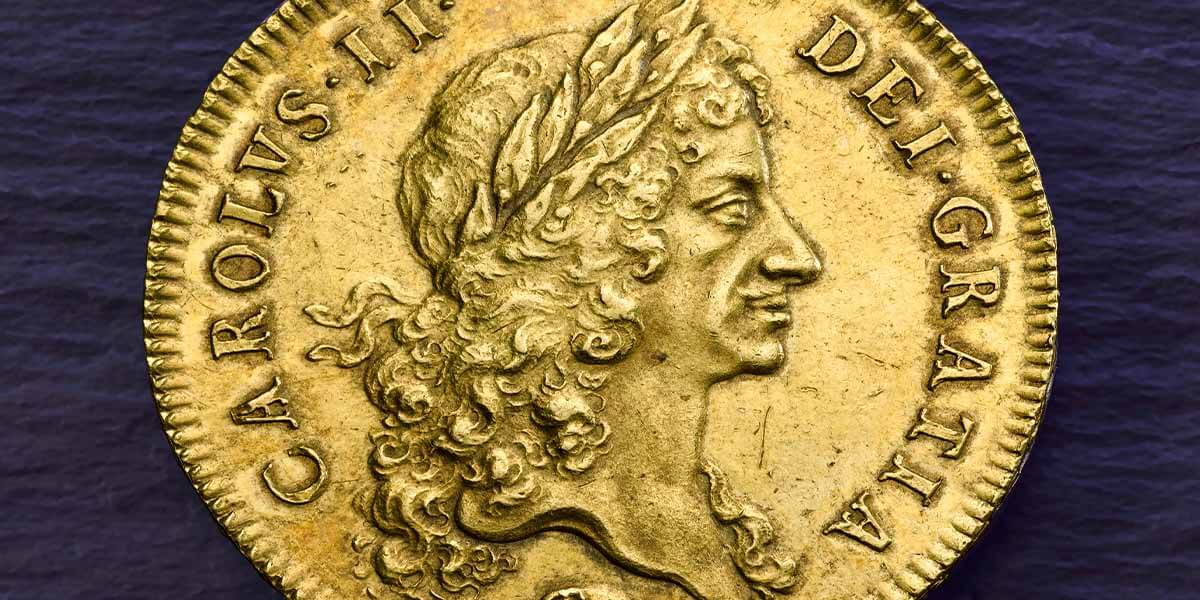
John Roettier remained at The Royal Mint for the majority of his life, and was buried in the Tower following his death in 1703. Widely considered one of the greatest engravers to have worked for The Royal Mint, he created some beautifully detailed designs for coins, medals and Great Seals during his time as Chief Engraver.
Alongside Chief Engraver Gordon Summers and Product Designer Laura Clancy, we have used original coins to produce a faithful recreation of John Roettier’s original design. The reverse design of this particular coin was based on a five guinea piece from 1668, which features the first bust of Charles II to appear on British coinage. A portrait of Charles II appears on the reverse and a portrait of His Majesty King Charles III features on the obverse, uniting royal past and present.

